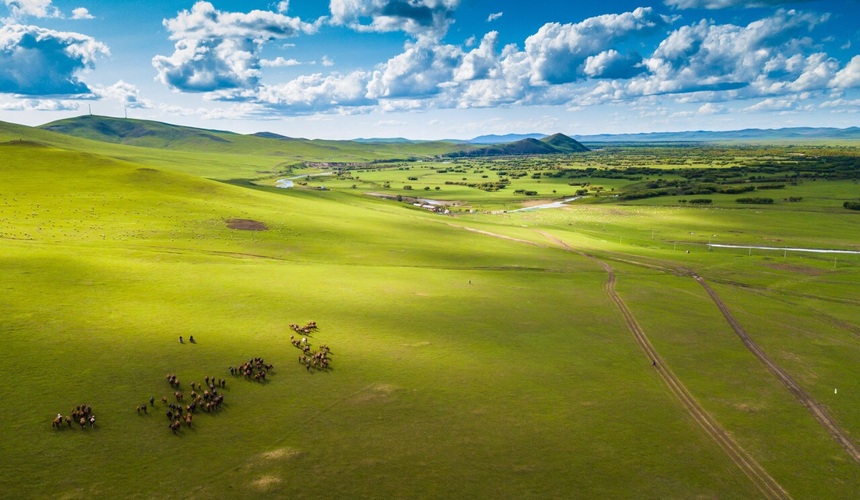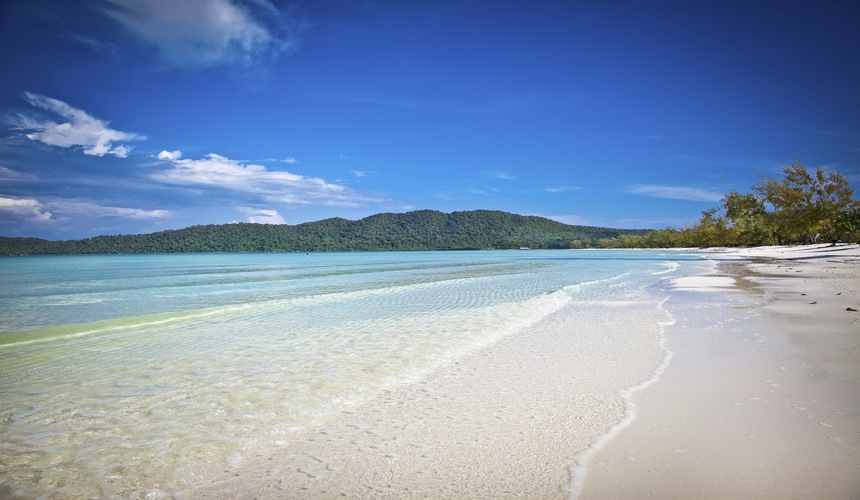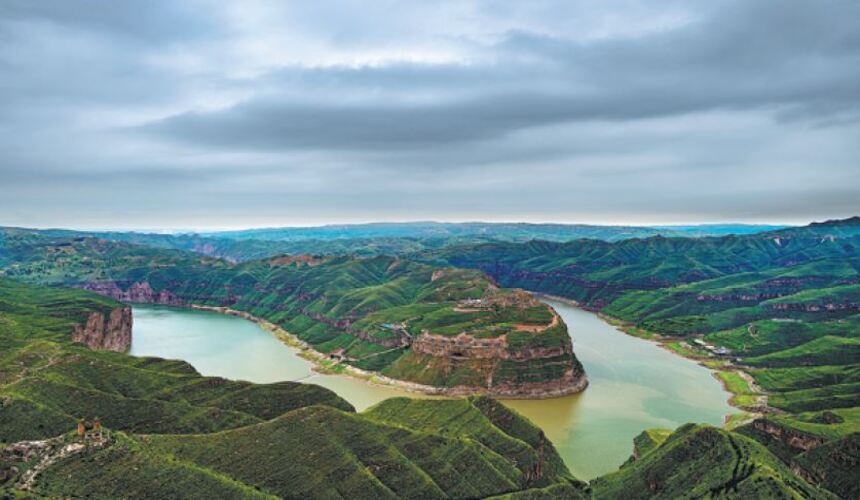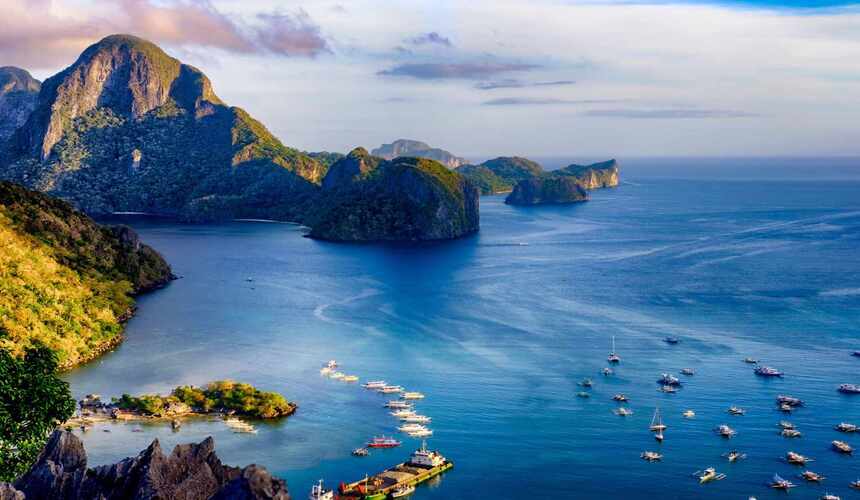
12 China most epic natural wonders for once in a lifetime
The world is full of wonders, particularly in the creativity of Mother Nature and the powerful force of time. These are some of the most incredible but lesser-known landscapes that have taken thousands of years to form in China. From otherworldly lava fields and kaleidoscopic glacial valleys to unusual rock formations and mesmerising archipelagos, these marvels of the natural world are sure to surprise you. Please consider adding them to your travel bucket list this year!
Shennong Jia lnternational Eootourism Area
Shennongjia is a vast wilderness area, and the areas you visit will largely depend on your driver, fellow passengers, and available time. However, there are definitely some areas that are worth trying to get to. Seeing the rare golden snub-nosed monkey is a highlight for most visitors, and Xiǎolóngtán, about 10km from the entrance, is one of the best places to spot them. Shénnóngdǐng, which is 20km from the entrance, is the highest peak in the park (3105m) and can be climbed in the summer. It usually takes two to three hours to reach the top. Travellers from all over the world also highly rate the wetlands surrounding Dajiu Lake, although it is considerably further away and requires a minimum half-day commitment. Other places of interest include several waterfalls and a stone forest. Overall, the scenery here is spectacular when the weather is good.
Location: Hubei Province / Best time to visit: May to October

Hukou Waterfall
Hukou Waterfall is the second largest waterfall in China and the largest on the Yellow River. Although sometimes associated with neighbouring Shanxi province, it can be seen from the Shaanxi side where the Yellow River cleaves the two provinces. The waters of the Yellow River are constricted at this point, being pinched between the mountains, causing them to gush at high speed. The amount of water fluctuates throughout the year, with more significant and dramatic flows occurring during heavy rainfall. Water flows from April to around October. Winter can also be a picturesque time to travel, as you can witness sparkling frozen ice falls.
Location: Shanxi Province / Best time to visit: April to May or September to November

Da Hinggan Range
The low mountains surrounding the inland plains still sustain large areas of natural forest, making it one of the few such places remaining in China. The ecoregion is renowned for its unique ‘Daurian flora’, which is transitional between Siberian and Manchurian floras. The western interior reaches of the Da Hinggan mountain range in Chinese Inner Mongolia extend northwards to merge with the Dzhagdy Mountains of Russia, an eastern extension of the great Altai mountain system. The Da Hinggan Range has an elevation of 1,200 to 1,300 meters. Arxan National Forest Park is situated in the southwest of the Da Hinggan Range in Inner Mongolia. Arxan Mountain is located at the center of the forest region of the Greater Khingan. It is also noteworthy that the mountain is situated at the junction of the Hulunbuir Grassland, the Xilingol Grassland, the Horqin Grassland, and the Mongolian Grassland, which results in beautiful scenery in the area. The Arxan volcano group is famous for having the densest and most alpine crater lakes in the world. The Yading Nature Reserve, located 140km south of Daocheng, boasts Seven Heaven Lakes and 40 lava-dammed lakes, providing a breathtaking sight.
Location: Heilongjiang Province / Best time to visit: June to August

Daocheng Yading
The reserve is centred around three sacred snowcapped mountains, forming a holy trinity surrounded by forested valleys, crystal-clear rivers, and glacier-fed lakes. The landscapes are truly awe-inspiring, and visitors can enjoy hiking, riding, and camping. The day-hike option is available. Take the shuttle bus from the ticket office into the park, just beyond the small settlement of Longtong Ba. From here, hike 2km to the 800-year-old Chonggu Monastery. Electric carts are available from the monastery to take you into the Luorong Grassland, which offers incredible views of the trinity.
Location: Sichuan Province / Best time to visit: September to October

Nyingchi
Nyingchi, with an average altitude of 3,000 meters above sea level, is an excellent choice for the first stop of a Tibet trip. As most newcomers experience some degree of altitude sickness, Nyingchi may be an easier place to acclimatise due to its lower elevation. Nyingchi is renowned for the blooming of peach blossoms in March and April. The peach trees here are mostly wild and the oldest one is estimated to be 680 years old. There are approximately 3 million wild peach trees that grow in groups, forming a dreamlike garden in the valley or individually decorating local households. During the peak of the blooming season, Nyingchi transforms into a romantic pink wonderland, attracting flower enthusiasts. To celebrate the beauty of spring, the Nyingchi Peach Blossom Festival is held annually at the end of March.
Location: Tibet Autonomous Region / Best time to visit: September to October

Nujiang Grand Canyon
The Nujiang Great Canyon is a breathtaking natural wonder that spans 315 kilometers in northwest Yunnan province, southwest China. Suspension bridges with steel cables connect small communities with the main road and larger villages. The scenery is stunning. Farms and villages dot this riverine wonderland, which is home to Nu, Lisu, Drung, and Tibetan minority people. Forests, streams, and waterfalls add their unique features to the bigger picture. It almost seems too good to be true, but there it is before your eyes: memories of other beautiful places you have seen are overwhelmed by its colour, scale, and grandeur.
Location: Yunnan Province / Best time to visit: Spring

Kanas Lake
Kanas Lake is a beautiful body of water surrounded by tall mountains located in the southernmost part of the Siberian taiga ecosystem, bordered by Mongolia, Russia, and Kazakhstan. The majority of the local population consists of Kazakh or Tuvan people. Some tourists visit the area in hopes of catching a glimpse of the Kanas Lake Monster, which is often compared to Scotland’s Loch Ness Monster and has been a popular topic of discussion around yurt campfires for years. The area is most easily accessible from April to October due to ice and snow making transportation difficult at other times. The autumn colours are particularly stunning around mid-September.
Location: Xinjiang Autonomous Region / Best time to visit: June and September

Jiuzhaigou National Park
Jiuzhaigou National Park’s raw mountain beauty and sparkling lakes were a highlight of China for many visitors. The park has three main branches: the Zechawa, Rize, and Shuzheng valleys. To reach the Primeval Forest at the top of the Rize Valley, take a shuttle from Nuorilang Bus Station for the roughly 19km ride.Although not the most picturesque area of the park, the 8km trail leading from here to Bamboo Arrow Lake is one of the least frequented. From here, a short hike will take you to Panda Lake, Five-Flower Lake, and Pearl Shoals; three of the park’s most popular attractions due to their crystal-clear water, colourful hues, and, in the case of Pearl Shoals, thundering waterfalls set against a backdrop of snowy peaks. On the way, keep an eye out for the path up to Tiger Mouth, a cliff-top overlook of Five-Flower Lake. This location showcases an astounding array of colours that are possible in a single small lake, better than perhaps anywhere else in Jiuzhaigou.
Location: Sichuan Province / Best time to visit: Autumn

Ejin Banner
Ejin, located within the hostile Gobi Desert, is the westernmost banner in Inner Mongolia. It borders Gansu province to the southwest and Mongolia to the north. Ejin Banner is renowned for its diverse natural beauty and is home to one of the largest Euphrates or desert poplar forests in the world, covering over 300 square kilometres. During autumn, the leaves turn a rich golden colour, causing the forest to shimmer in the desert sun. The Juyan Lake Basin, located within the Ejin Banner, has been historically significant for centuries. The Tangut people of the Western Xia Dynasty (1038-1227) constructed this ancient metropolis, which became a prominent trading hub during the 11th century. Today, only the deserted ruins of this once esteemed city remain.
Location: Inner Mongolia / Best time to visit: Autumn

Huangguoshu Waterfall
The Huangguoshu waterfall is the largest waterfall in China and a popular destination for domestic travellers. It is 77.8m tall and 81m wide, making it Guizhou’s top natural attraction. From June to October, the falls produce a deafening roar and create rainbows from the mist that dance around Rhinoceros Pool. Visitors should not miss the opportunity to explore the 134m-long Water Curtain Cave, a natural corridor in the rock face dripping with water. The national park not only features the falls but also other natural attractions. Exploring the colossal caves within the geological Tianxing Qiao Scenic Area is an awe-inspiring experience, especially if you have time for the Longgong or Zhijin Caves.
Location: Guizhou Province / Best time to visit: Summer

Hulunbuir Grasslands
The Hulunbuir Grasslands, one of the largest prairies in China, represent some of the finest patches of untouched wilderness in the country. The grasslands boast over 3,000 rivers, 500 lakes, woodlands, and meadows, making it a treasure trove of natural beauty. Except for the Greater Khingan Mountains, which stretch from north to south, the area is mostly flat, providing endless views of lush greenery. Pearl white yurts are scattered throughout the jade-hued grasslands, where farmers enjoy the serenity of nature in their leisure time.During the summer, the grass is green and the meadows are filled with wildflowers. Visitors can enjoy horseback riding, camel riding, horse-drawn cart tours, or boating on the lakes.
Location: Inner Mongolia / Best time to visit: May to October

Yangtze Gorges Scenic Spot
Few river panoramas are as awe-inspiring as the Three Gorges. Even Tang dynasty poets and literati were left weak-kneed by their beauty. Countless sightseers have captured their magnificence from Chongqing to Yichang. For as long as many Yangzi boat hands can remember, the Three Gorges have been a part of the prestigious China Tour triumvirate, alongside the Terracotta Warriors and the Great Wall. The natural scenery along the route is more dramatic than its historical sights, which are often crammed with allusions. Temples along the way can be crowded, while the uniform riverine towns and settlements have a modern appearance rather than a quaint and charming one.
Best time to visit: Spring, Summer, Autumn

Are there any other places you would like to recommend to others? Feel free to leave your comment below or chat with our travel consultants and tailor-make your special itinerary!



